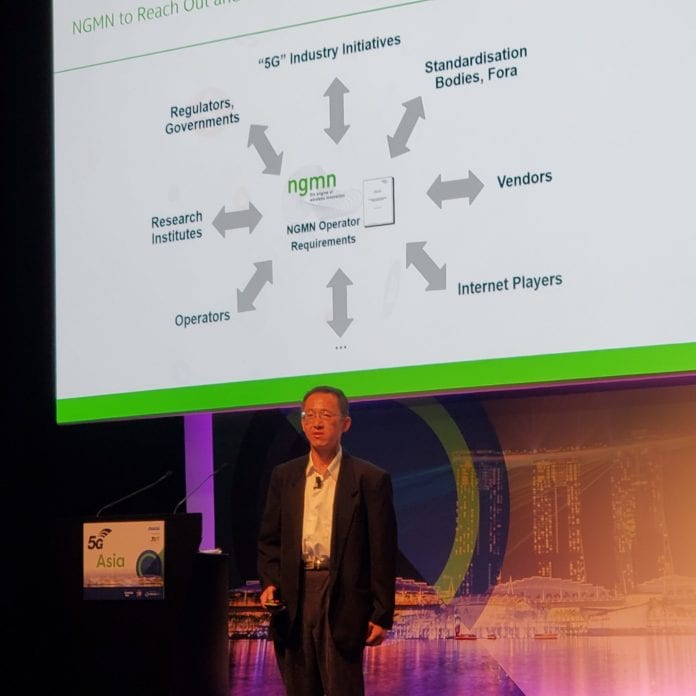NGMN Alliance pushing “vibrant vertical market engagement” to move 5G beyond eMBB
SINGAPORE–There’s no doubt 5G is to a limited extent today and will be more broadly soon a consumer service. The uncertainty comes in around how to monetize that consumer service. But the real revenue opportunity seems pegged to vertical digitization, but that requires moving past enhanced mobile broadband to the full breadth of 5G capabilities. And it also requires understanding the needs of the industrial users capable of helping operators return on the massive capex that will go into this generational upgrade.
During a presentation at the 5G Asia event this week at Marina Bay Sands, Chiung-Jang Chen, Chunghwa Telecom’s senior director of the 5G Lab and speaking on behalf of the Next Generation Mobile Networks group, highlighted the need to engage directly with industrial 5G users to understand their needs then feed those learnings back into standardization, R&D and product/service offerings.
Chen correctly noted the first wave of 5G commercial deployments–U.S., U.K., South Korea, etc…”is restricted to eMBB. In NGMN’s view, it’s far from complete for 5G without vibrant vertical market engagement. So NGMN developed projects that are essential for unlocking the vertical use cases.”
To that end, NGMN established a working group led by representatives from China Mobile and Deutsche Telekom with an initial focus on automotive manufacturers and the adoption for cellular V2X. The results of that work would then go over to 3GPP for consideration and potential inclusion in upcoming releases that refine the massive IoT and URLLC aspect of the 5G NR standard.
Chen called out two primary challenges: The first is the diverse and fragmented nature of the industrial market. “This implies a fragmentation of devices and equipment that’s not favorable for 5G development.” Second, “We need to develop a highly-dynamic core as soon as possible. We should have the core network with the capabilities of supporting network slicing, virtualization and automation in order to better support the dynamic and diverse requirements of the verticals.”
He continued: “We should establish close partnerships between operators and industries. Mutual understanding and trust is fundamental for both sides to jointly deliver new innovations and business models that can offer a revenue boost for the overall economy. The second is strong and continuous engagement…both sides should work closely in test, trial and prototyping to make the use case a reality.
This same topic came up earlier this year at the 5G World event in London. Dario Talmesio, principal analyst and practice leader at Ovum, called for a co-creation approach to applying 5G to industries.
“It’s about industry collaboration and it’s about third parties sometimes stitching it all together. In some cases, it’s an operator doing it but in many cases it won’t be an operator…because the complexity of understanding the vertical are, in some cases, insurmountable. There isn’t enough manpower, there isn’t enough brain power, there isn’t enough financial capacity to enter a specific vertical.”

